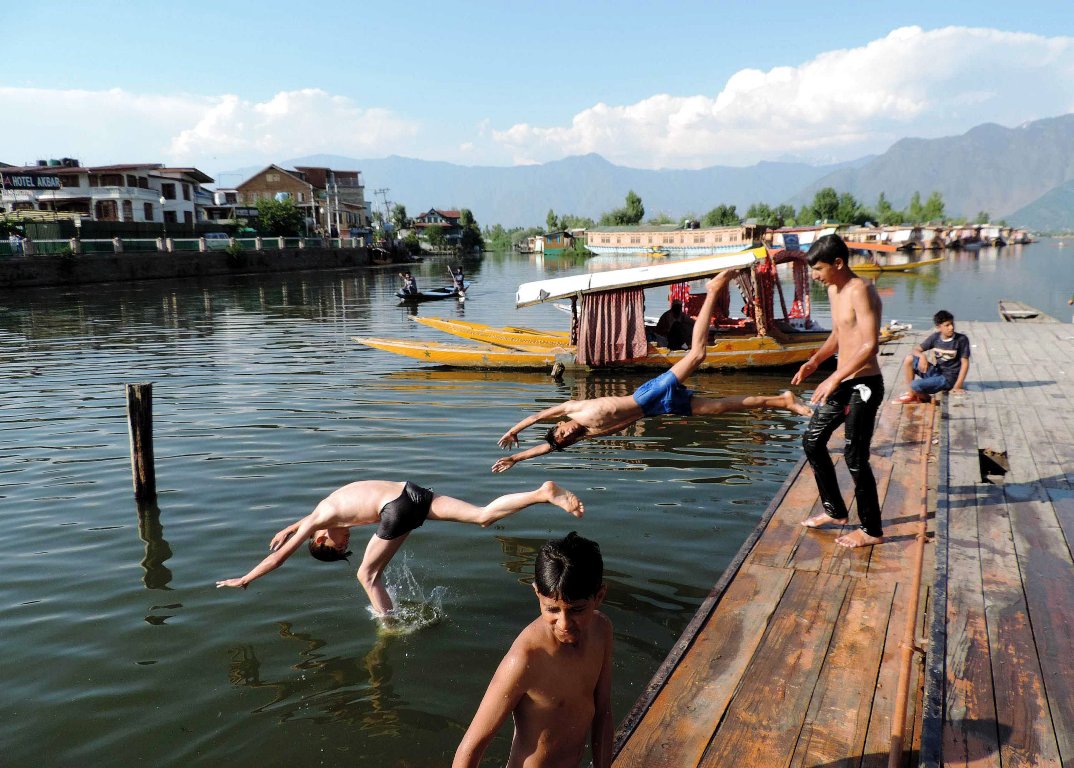
Due to the ongoing dry period, most of Kashmir saw a heat wave from Monday. The highest temperature recorded in Srinagar was 35.6 degrees Celsius, which caused the Jhelum River’s water level to drop by 30%.
Yesterday’s temperature settled 5.7 degrees Celsius above average, making Srinagar, the summer capital of Jammu and Kashmir, warmer than the Jammu division.
Heat waves were also reported in Qazigund, Pahalgam, Kupwara, and Kokernag in addition to Srinagar. For the next 24 hours, there is a forecast of continuous heat wave conditions in some areas of Jammu and Kashmir.
The highest temperature recorded in Qazigund, the entry point to Kashmir, was 34.0 degrees Celsius. Pahalgam, Kupwara, and Kokernag had daytime temperatures of 30.2 degrees, 35.6 degrees, and 33.5 degrees, respectively.
However, until July 26, the Meteorological Department (MeT) has forecast partly overcast weather. Brief bursts of rain and thundershowers are anticipated in isolated to scattered locations in Kashmir and scattered to fairly widespread locations in Jammu.
The Meteorological Department’s Director, Dr. Mukhtar Ahmad, announced that partly to usually cloudy weather with sporadic periods of light to moderate rain is predicted for July 27 and July 28. He continued by saying that from July 29 to July 31, there is a chance of rain and thunderstorms in isolated to dispersed locations.
The MeT issued an advisory announcing the probability of strong showers for brief intervals along with the risk of mudslides, landslides, and stone firing in a few areas of Jammu that are susceptible. The weather will be hot and muggy until July 26.
Braham Jyoti Sharma, Chief Engineer of the Irrigation and Flood Control (I&FC) division, told local news agency KNO that the Jhelum River’s water level has decreased by 30% as a result of the continuing dry period in Kashmir.
He claimed that the current circumstances have rendered about 10% of lift irrigation schemes non-operational, but there is no need to fear since even if things get worse, it can still be under control.
“The situation is not alarming at present, and regular meetings are being conducted to monitor the prevailing situation,” he said, adding that the situation is under control.
Officials are urging residents to use water wisely since the current dry season has negatively impacted 20% of Kashmir’s water supply. (KNO)
